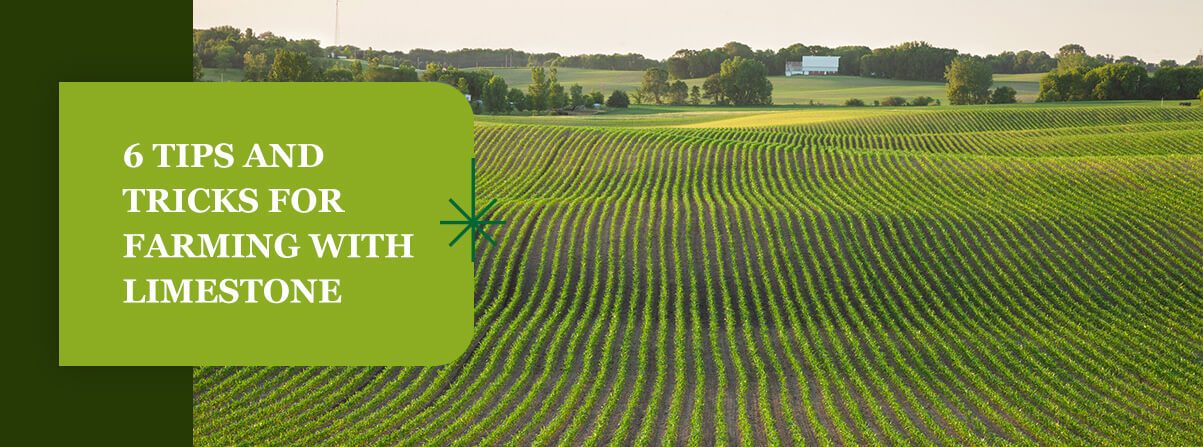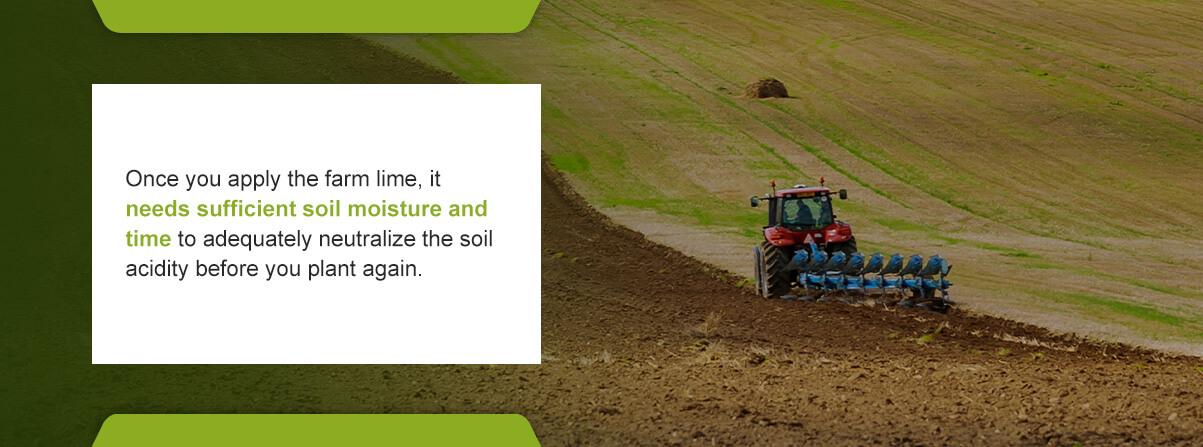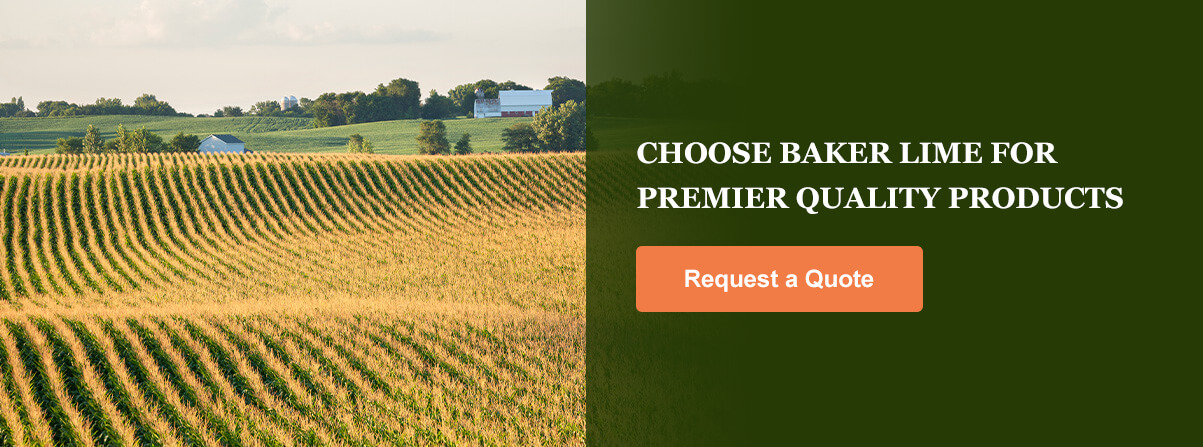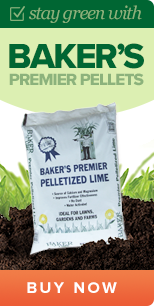Table of Contents

Lime is a multifaceted sedimentary rock consisting primarily of calcium carbonate, and farmers have used it for centuries to reduce soil acidification, improve food production and enhance agricultural sustainability. Farmers can mitigate acidity and enhance soil quality with a tried, tested, cost-effective method.
Here, we examine farm lime and how you can reap the benefits of limestone soils. We offer essential tips, tricks and strategies for farmers new to using limestone and those looking to enhance their existing liming practices.
Understanding Limestone
If we look at how limestone forms, we see its primary component is calcium carbonate. To neutralize soil acidity, you’ll want to find a calcitic limestone with a calcium carbonate equivalence of 100%, reflecting the purity level and how well it neutralizes.
However, another common type of limestone is dolomitic limestone, which comes from deposits containing a combination of calcium and magnesium carbonates. This type of limestone might have a slightly lower calcium carbonate equivalence, but you’ll want its magnesium content if your soil has nutrient deficiencies. This way, you can simultaneously address the pH and lack of nutrients.
Why Would You Apply Farm Lime?
There are several uses for limestone, including raising agricultural soil pH levels and restoring old or dead soil, and these applications are multifaceted. For instance, nutrient availability decreases and aluminum levels increase when your soil pH drops below 5.5. Manganese concentrations rise once the pH levels drop below 5.2, making the soil toxic for plant root growth.
Neutralizing the soil acidity ensures the environment is conducive to microbial activity, which helps improve nutrient absorption by crops. The best pH level depends on the crop. However, most achieve optimum nutrient absorption when the soil pH sits near 7.0.
6 Tips for Farming With Limestone
Here are some systematic tips to help you achieve the desired results when farming with limestone. When in doubt, contact your local agricultural lime distributor, who understands your area’s soil type, conditions and farming needs.
1. Soil Testing and Analysis
Before introducing limestone to your farm, conduct soil testing and analysis. In doing so, you’ll understand your soil’s current state and its pH levels. Soil testing also offers insight into nutrient deficiencies, which can help you decide on the correct type of farm lime and if you need additional additives.
You must know how to measure and correct pH levels for your particular crop type. For instance, hardy crops like potatoes can handle pH levels as low as 4.5, while mushrooms prefer a more alkaline soil. A sweet spot for each crop type sits between the minimum and maximum pH levels.
Whether you are a smaller or larger commercial farmer, you should conduct periodic soil and micronutrient level testing to ensure ongoing assessment. If you suspect a discrepancy, send soil samples for professional laboratory testing.
2. Type and Source of Lime
Different types and grades of lime meet specific specifications. When looking at lime variations, you’ll want to consider these factors.
- The moisture class determines whether the lime is dry or hydrated.
- The calcium carbonate equivalence is the level of neutralizing qualities compared to pure calcium carbonate — often, lime is 90% calcium carbonate. It also examines the magnesium count and takes the fineness into account.
- The effective neutralizing value is the limestone’s acid-neutralizing abilities per unit of weight and represents the percentage of calcium carbonate available to neutralize lower pH levels. It considers the purity and concentration of calcium carbonate and indicates reaction time.
- The effective neutralizing power is the total amount of acidity a particular quantity can neutralize. It’s a combination of the limestone’s fineness and its amount of calcium carbonate.
Limestone types and sources make it ideal for different purposes. In farming, you’ll primarily want damp or dry variations of the following two options.
- Calcitic limestone is appropriate for soils with adequate magnesium levels.
- Dolomitic limestone comes from dolomite, also a sedimentary carbonate rock, and is best for soils with low pH that lack sufficient magnesium.
3. Lime Rate and Calculation
Several factors come into play when calculating how much lime to apply, such as the existing soil pH and your target pH. To start, you can use an online lime rate calculator or the following basic formula — lime requirement in tons per hectare = (target pH – current pH) x soil texture factor.
Soil factors include the following.
- Sand: 2
- Sandy loam: 3
- Loam to clay loam: 4
It is best to raise the pH by one unit at a time, and you still need to factor in the exact type and quality of limestone you wish to use.
Once you have determined how much you will need based on your soil tests and preliminary calculations, you can work out your approximate cost for the required amount.
4. Lime Application Timing
Application frequency varies on a case-by-case basis. However, you’ll typically need to do it every two to three years to retain optimal soil pH levels.
Once you apply the farm lime, it needs sufficient soil moisture and time to adequately neutralize the soil acidity before you plant again. You’ll want to sample soil months in advance so the lime integrates with the soil to provide a stable and high enough pH for seed germination and plant growth.

Typically, soil pH is lowest in the fall and winter after you harvest mature crops. You will want to pay special attention to the soil if you use nitrogen fertilizers, which could increase acidity.
Applying lime in the fall is usually the best timing, since the seasonal rains and moisture will make the lime more soluble.
5. Consider Soil Conditions
Besides pH levels, consider the soil’s texture, its compactness and drainage. These variables affect the lime, which can take roughly six months to break down and adjust the soil’s pH level. You may even need a follow-up application if the pH is too low.
Two crucial considerations when applying lime are the soil’s type and texture. The soil must have adequate drainage — otherwise, heavy rain will lead to your lime running off.
Finally, think about your delivery method. Driving trucks and other heavy equipment over the fields could compact the surface and displace the lime. Often, cover crops can be an asset when applying limestone soils.
6. Lime Application Methods
There are several ways to add lime to your fields. However, you want to apply it evenly for the best results. Dumping large amounts in some sections and neglecting others will leave you with uneven pH levels and crop quality.
When choosing an application method, consider the amount of farm lime to disperse, the size of the fields, crop types and the equipment at your disposal. Here are some techniques for applying lime to your soil:
- Broadcast spreading
- Top dressing
- Localized application
- Band application
- Incorporation
Choose Baker Lime for Premier Quality Products
If you want to start integrating lime into your farming, we have limestone distributors in several locations. Speak to a dealer in your state for a quote or more information on Baker Lime products. Alternatively, you can call us at 800-233-1991, and we will gladly answer any questions and put you in touch with a distributor near you.
Baker Lime has produced trusted limestone products since 1889, and our reputation for excellence continues today. As one of the leading suppliers on the East Coast, we offer a diverse range of limestone products made for commercial and local farmers, lawn specialists, retailers and gardening enthusiasts.









